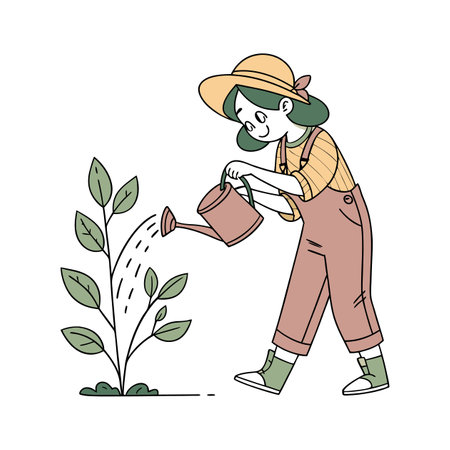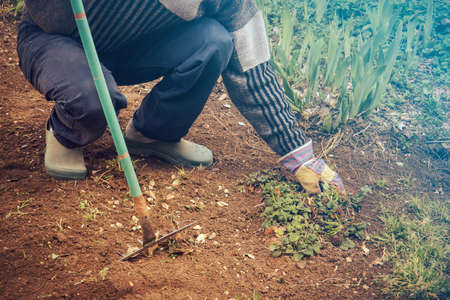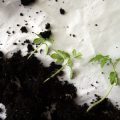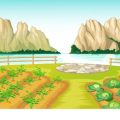Introduction to Native Plants and Year-Round Landscaping
When it comes to creating a beautiful, low-maintenance yard that thrives all year long, native plants are a smart and sustainable choice. Native plants are species that naturally occur in a specific region without human introduction. These plants have adapted over time to the local climate, soil, and wildlife, making them resilient and well-suited for their environment.
One of the biggest advantages of using native plants is their environmental benefit. Because they’re already adapted to local conditions, they typically require less water, fertilizer, and pesticides compared to non-native species. This means you can save time, money, and resources while also supporting local ecosystems.
Native plants provide essential food and shelter for pollinators like bees, butterflies, and birds. They also help control erosion, improve soil health, and filter stormwater naturally. When thoughtfully selected for seasonal interest—such as spring blooms, summer greenery, fall color, or winter texture—they can keep your landscape attractive throughout the entire year.
Key Benefits of Native Plants
| Benefit | Description |
|---|---|
| Low Maintenance | Require less watering, fertilizing, and pest control once established. |
| Eco-Friendly | Support local wildlife, reduce chemical use, and conserve water. |
| Seasonal Beauty | Offer year-round interest with flowers, foliage, berries, and textures. |
| Resilience | Tolerate local climate extremes better than exotic plants. |
By choosing native plants suited for your specific U.S. region—whether its the arid Southwest, humid Southeast, or chilly Northeast—you can enjoy a landscape that not only looks great but also supports the health of your environment every season of the year.
2. Regional Climate Considerations Across the U.S.
Understanding the diverse climates across the United States is key to successful all-season landscaping with native plants. Each region—from the rainy Pacific Northwest to the dry Southwest—has its own climate patterns, which directly influence plant selection and landscape design. Here’s a closer look at how climate shapes what you can grow and how to plan your garden throughout the year.
Major U.S. Climate Regions and Their Characteristics
The U.S. can be divided into several broad climate zones. Knowing your region helps you choose native plants that are naturally adapted to your environment, making them easier to maintain and more likely to thrive.
| Region | Climate Characteristics | Native Plant Traits |
|---|---|---|
| Pacific Northwest | Mild, wet winters; cool, dry summers | Moisture-tolerant, shade-loving plants like ferns and evergreens |
| Southwest (Desert) | Hot, dry summers; mild winters; low rainfall | Drought-resistant plants like cacti, agave, and sagebrush |
| Southeast | Hot, humid summers; mild winters; high rainfall | Humidity-tolerant species like magnolias, azaleas, and native grasses |
| Northeast | Cold winters; warm summers; four distinct seasons | Cold-hardy perennials and deciduous trees such as maples and coneflowers |
| Midwest | Hot summers; cold winters; moderate precipitation | Prairie grasses, wildflowers, and hardy shrubs like serviceberry |
| Mountain West | Cooler temperatures; short growing season; variable moisture | Alpine species and drought-tolerant natives like penstemon and juniper |
| California Coast | Mediterranean climate: wet winters, dry summers | Drought-tolerant perennials, coastal shrubs like manzanita and ceanothus |
Selecting Native Plants for Year-Round Appeal
To create a landscape that looks great in every season, its important to consider seasonal interest when choosing plants. For example:
- Spring: Look for early bloomers like trillium or redbud in Eastern regions.
- Summer: Use colorful wildflowers such as black-eyed Susan or bee balm.
- Fall: Choose natives with striking foliage colors like sumac or oakleaf hydrangea.
- Winter: Include evergreens or plants with interesting bark or seed heads like switchgrass or dogwood.
Tip:
You can mix different types of native plants—trees, shrubs, perennials, and grasses—to create layers of color and texture that change with the seasons while supporting local wildlife.
The Importance of Microclimates Within Your Region
Even within a single region, microclimates—small areas where conditions differ from the surrounding area—can impact your plant choices. Things like sun exposure, wind protection, soil type, and elevation all play a role in what will grow best in your yard.
Examples of Microclimate Factors:
- A south-facing slope may be warmer and drier than other parts of your property.
- An area shaded by buildings or trees may stay cooler and hold more moisture.
Selecting native plants suited not just to your region but also to your specific site conditions will give you a healthier, more resilient landscape all year round.

3. Selecting Native Plants for Seasonal Interest
When creating a beautiful landscape that looks great year-round, choosing native plants that shine in different seasons is key. Native plants are naturally adapted to local climates and soils, making them easier to maintain and better for the environment. Heres how you can pick the right ones to ensure your yard has color, texture, and interest throughout the year.
Spring: Fresh Blooms and Early Color
In spring, look for native perennials and flowering shrubs that burst into bloom as the weather warms up. These plants signal the end of winter and add fresh life to your landscape.
Examples by Region:
| Region | Native Spring Plants |
|---|---|
| Northeast | Virginia bluebells, Eastern redbud |
| Southeast | Coral honeysuckle, Oakleaf hydrangea |
| Midwest | Prairie smoke, Wild columbine |
| Southwest | Penstemon, Desert marigold |
| Pacific Northwest | Trillium, Red-flowering currant |
Summer: Bright Colors and Full Growth
Summer is the time for bold colors and lush foliage. Choose native plants that thrive in full sun and attract pollinators like bees and butterflies.
Top Tips:
- Look for long-blooming wildflowers like black-eyed Susan or coneflowers.
- Add native grasses like little bluestem for texture and movement.
Fall: Brilliant Foliage and Late Blooms
For a stunning autumn display, select native trees and shrubs with colorful leaves, as well as late-season bloomers that provide nectar for migrating pollinators.
Great Fall Performers:
- Sugar maple (Northeast & Midwest) – fiery orange and red foliage
- Aromatic aster (Nationwide) – blooms into late fall
- Sourwood tree (Southeast) – brilliant red leaves and fragrant flowers
Winter: Structure and Subtle Beauty
Even in winter, your landscape can be interesting with evergreens, seed heads, and structural elements like branches or bark textures.
Ideas for Winter Appeal:
- Use evergreen natives such as eastern red cedar or manzanita for year-round greenery.
- Leave seed heads from plants like purple coneflower or switchgrass for visual texture and bird food.
Pro Tip:
Create a planting plan that includes at least one highlight plant for each season. This ensures theres always something eye-catching in your yard no matter the month.
4. Design Strategies for All-Season Curb Appeal
Creating a year-round attractive landscape using native plants means thinking beyond just what looks good in spring or summer. By planning your layout, selecting native plants with seasonal interest, and using layering techniques, you can build a dynamic yard that turns heads every month of the year. Heres how to make it work in different U.S. regions.
Layout Planning for Year-Round Interest
Start by designing your garden layout with structure in mind. Use pathways, raised beds, and focal points like boulders or benches to give your space form—even when plants are dormant. Consider sightlines from the street and windows to maximize visual impact throughout all seasons.
Using Color Combinations by Season
Native plants often offer a natural progression of color from one season to the next. Choose species that bloom in succession or have foliage that changes with the seasons to keep your yard visually engaging. Below is a simple guide to combining seasonal color using native plants:
| Season | Color Focus | Example Native Plants | Regions |
|---|---|---|---|
| Spring | Pinks, Purples, Fresh Greens | Eastern Redbud, Wild Lupine | Midwest, Northeast |
| Summer | Bright Yellows, Blues, Deep Greens | Black-Eyed Susan, Blue Vervain | Southeast, Great Plains |
| Fall | Burgundy, Orange, Gold | New England Aster, Switchgrass | Northeast, Pacific Northwest |
| Winter | Evergreens, Bark Texture, Red Berries | Red-Twig Dogwood, American Holly | Northern States, Appalachians |
Layering Techniques for Depth and Texture
A well-layered garden not only looks lush but also provides habitat and weather resilience. Use a mix of plant heights—groundcovers, mid-size perennials, shrubs, and canopy trees—to create depth. Group plants in odd numbers and repeat patterns across the yard for visual harmony.
Basic Plant Layering Example:
| Layer Level | Description | Sample Native Plants (General) |
|---|---|---|
| Canopy (Tall Trees) | Adds vertical structure and shade; anchors design. | Sugar Maple (Northeast), Live Oak (South) |
| Shrub Layer | Adds bulk and seasonal color through flowers or berries. | Serviceberry, Ninebark |
| Perennial Layer | Main source of blooms and pollinator support. | Echinacea, Goldenrod, Milkweed |
| Groundcover Layer | Covers soil to reduce weeds and erosion. | Pussytoes, Creeping Phlox |
Regional Tips for Maximum Impact
Northeast & Midwest:
Select hardy perennials and deciduous shrubs with interesting fall color. Mix in evergreens like Eastern Hemlock for winter appeal.
Southeast:
Use drought-tolerant natives like Beautyberry or Coral Honeysuckle that offer long bloom periods and bird-friendly fruit.
Southwest:
Create contrast with desert natives like Agave or Desert Marigold. Use gravel mulch and rock features to emphasize texture year-round.
Pacific Northwest:
Mosses and ferns can thrive in shady areas alongside flowering natives like Oregon Grape or Red Flowering Currant.
Great Plains:
Tallgrass prairie species like Big Bluestem and Purple Coneflower provide height and movement even into winter months.
No matter where you live in the U.S., using native plants strategically—with thoughtful layout, colorful combinations by season, and smart layering—can help your landscape stay vibrant and inviting all year long.
5. Region-Specific Plant Recommendations
Choosing native plants that thrive in your local climate is key to creating a beautiful, low-maintenance landscape that looks great year-round. Below are curated lists of native plants for different U.S. regions, including their seasonal interest and basic care tips.
Northeast
| Plant Name | Seasonal Interest | Care Requirements |
|---|---|---|
| Eastern Red Columbine (Aquilegia canadensis) | Spring blooms; attracts hummingbirds | Partial shade, moist soil |
| New England Aster (Symphyotrichum novae-angliae) | Late summer to fall color | Full sun, well-drained soil |
| Winterberry (Ilex verticillata) | Bright red berries in winter | Moist soil, tolerates wet conditions |
Midwest
| Plant Name | Seasonal Interest | Care Requirements |
|---|---|---|
| Purple Coneflower (Echinacea purpurea) | Summer blooms; attracts pollinators | Full sun, drought-tolerant once established |
| Little Bluestem (Schizachyrium scoparium) | Fall color; winter texture | Full sun, well-drained soil |
| Prairie Smoke (Geum triflorum) | Spring flowers; unique seed heads in summer | Dry to medium soil, full sun to part shade |
South
| Plant Name | Seasonal Interest | Care Requirements |
|---|---|---|
| Coneflower (Echinacea spp.) | Summer blooms, long-lasting flowers | Tolerates heat and drought, prefers full sun |
| Southern Magnolia (Magnolia grandiflora) | Evergreen foliage; large white blooms in late spring/summer | Moist, well-drained soil; sun to partial shade |
| Crossvine (Bignonia capreolata) | Early spring flowers; evergreen in mild winters | Tolerates various soils; full sun to part shade |
West (Pacific Northwest)
| Plant Name | Seasonal Interest | Care Requirements |
|---|---|---|
| Sword Fern (Polystichum munitum) | Year-round greenery and texture under trees or shady spots | Loves moisture and shade; easy maintenance once established |
| Red Flowering Currant (Ribes sanguineum) | Blooms early in spring; attracts hummingbirds | Tolerates dry summers; prefers partial shade |
| Kinnikinnick (Arctostaphylos uva-ursi) | Evergreen groundcover with red berries in fall/winter | Drought tolerant once established; needs good drainage |
Southwest (Desert Regions)
| Plant Name | Seasonal Interest | Care Requirements |
|---|---|---|
| Purple Sage (Leucophyllum frutescens) | Purple blooms after rain events | Drought tolerant, full sun |
| Brittlebush (Encelia farinosa) | Shrub with yellow flowers in spring | Loves dry heat, poor soil okay |
| Palo Verde Tree (Cercidium spp.)
|
Selecting the right native plants for your region not only supports local ecosystems but also ensures your landscape remains vibrant and resilient across all seasons. Whether youre dealing with snowy winters or arid summers, theres a perfect plant palette tailored just for your area.
6. Maintenance Tips and Sustainable Practices
Maintaining a native plant landscape throughout the year doesn’t have to be complicated. With a few seasonal guidelines and sustainable practices, your garden can stay healthy, beautiful, and eco-friendly. Here’s how to care for native plants across different U.S. regions while minimizing environmental impact.
Pruning by Season
Pruning native plants helps promote healthy growth, shape your landscape, and prevent disease. Timing and method vary depending on the plant species and region.
| Season | Pruning Tips |
|---|---|
| Spring | Cut back dead stems from winter; prune early bloomers after flowering. |
| Summer | Light shaping of fast growers; remove faded blooms (deadheading). |
| Fall | Avoid heavy pruning—plants prepare for dormancy; remove diseased branches only. |
| Winter | Prune dormant trees and shrubs in warmer regions; leave seed heads for wildlife in colder zones. |
Mulching for Moisture and Soil Health
Mulch helps retain soil moisture, suppress weeds, and regulate temperature. Organic mulch like shredded bark or leaf litter is ideal for native landscapes.
- Apply 2–3 inches of mulch around the base of plants, avoiding direct contact with stems.
- Replenish mulch in spring or fall as it breaks down naturally over time.
- Use local materials when possible to reduce carbon footprint.
Irrigation Tips for Native Plants
Most native plants are adapted to local rainfall patterns, but young plants need regular watering until established (usually within 1–2 years).
- Water deeply but less frequently to encourage deep root growth.
- Install drip irrigation systems for efficient water use in drier regions like the Southwest.
- Reduce watering during cooler months or rainy seasons.
Eco-Friendly Pest Control Methods
Pest issues are usually minimal with native plants, but if they arise, try natural solutions first:
- Introduce beneficial insects like ladybugs or lacewings to control aphids and other pests.
- Use neem oil or insecticidal soap as non-toxic treatments when necessary.
- Avoid broad-spectrum pesticides that harm pollinators and other helpful organisms.
Encourage Biodiversity
Diverse native plantings attract birds, bees, butterflies, and other beneficial wildlife that help maintain balance in your garden’s ecosystem. Choose a variety of plant types (trees, shrubs, grasses, flowers) that bloom at different times to support pollinators year-round.
Sustainable Lawn Alternatives
If you’re looking to reduce turfgrass areas, consider replacing them with low-maintenance native groundcovers or meadow-style plantings. These require less mowing, watering, and fertilizer while providing more habitat value.


